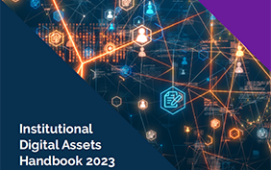
London-based low-latency technology specialist Chronicle Software has developed an off-the-shelf integration between its Chronicle Queue messaging framework and KX’s kdb+ high-performance database in partnership with consultancy firm AquaQ.
According to Chronicle CEO Peter Lawrey, over 80% of the Top 100 banks Globally use the company’s Enterprise or Open Source products. Many of these banks are also kdb+ users. The new offering will provide users with a ready-made integration between the two products, something that firms have previously had to build and maintain themselves.
A common use case is where firms need to speed up kdb+ writes, says Lawrey. “They want to be able to firehose data to kdb+ and then have kdb+ pick up that data as quickly as it can. kdb+ processes data a lot quicker if it’s batched, rather than just taking a message at a time. Essentially, clients are using Queue as a big, high-performance buffer, so they can process their data quicker within kdb+”.
Lawrey explains that integrating with third-party platforms such as kdb+ is one of the company’s three main focus areas for the company’s 2021 growth strategy. “We recognise that there is always work to be done by clients when integrating with third-party products. So part of our strategy this year is to provide some pre-built connectors for the most common third-party products we see our clients using.” Potential upcoming integration projects include the Spring Boot framework, Eclipse’s Vert.x toolkit and Apache’s Camel open-source integration framework, Lawrey says.
Another area of focus is in helping firms break down their monolithic applications into microservices, for easier migration to the cloud. “Firms are using Queue to implement their microservices infrastructure, because it’s a very low latency, persistent messaging framework,” he says. “One of the problems with microservices is the overhead in breaking up a monolith into multiple services. We keep that overhead very low and improve performance by breaking up the microservices into much more manageable and tunable chunks.”
The third focus area for Chronicle this year is visualisation. “What we do can be pretty abstract,” says Lawrey. “For example, we care about latency, and often firms can’t see visually how fast their systems are running. Adding visualisation tools will allow our clients to construct and manage latency monitoring services across multiple machines via a GUI, without having to write code.”
Subscribe to our newsletter




